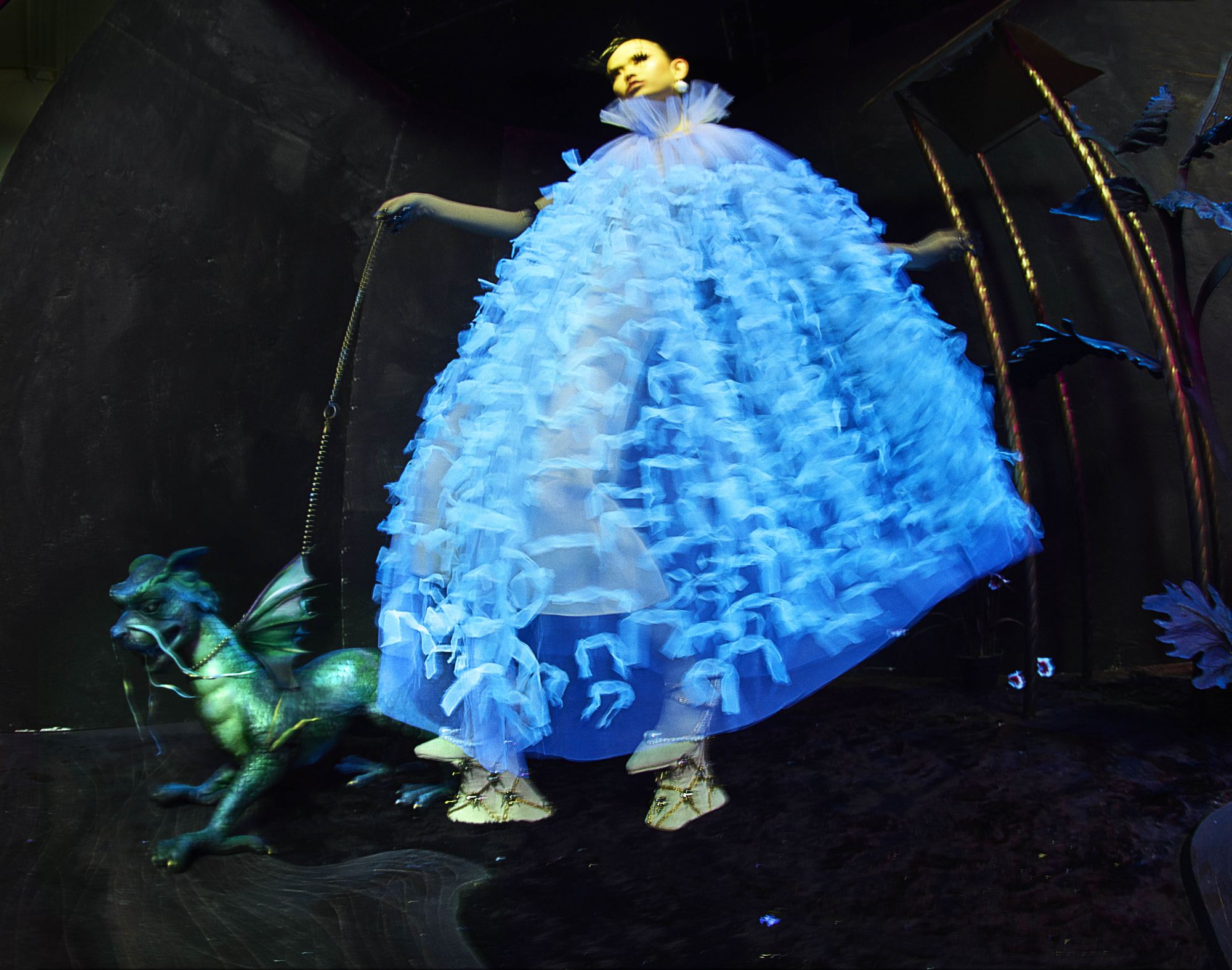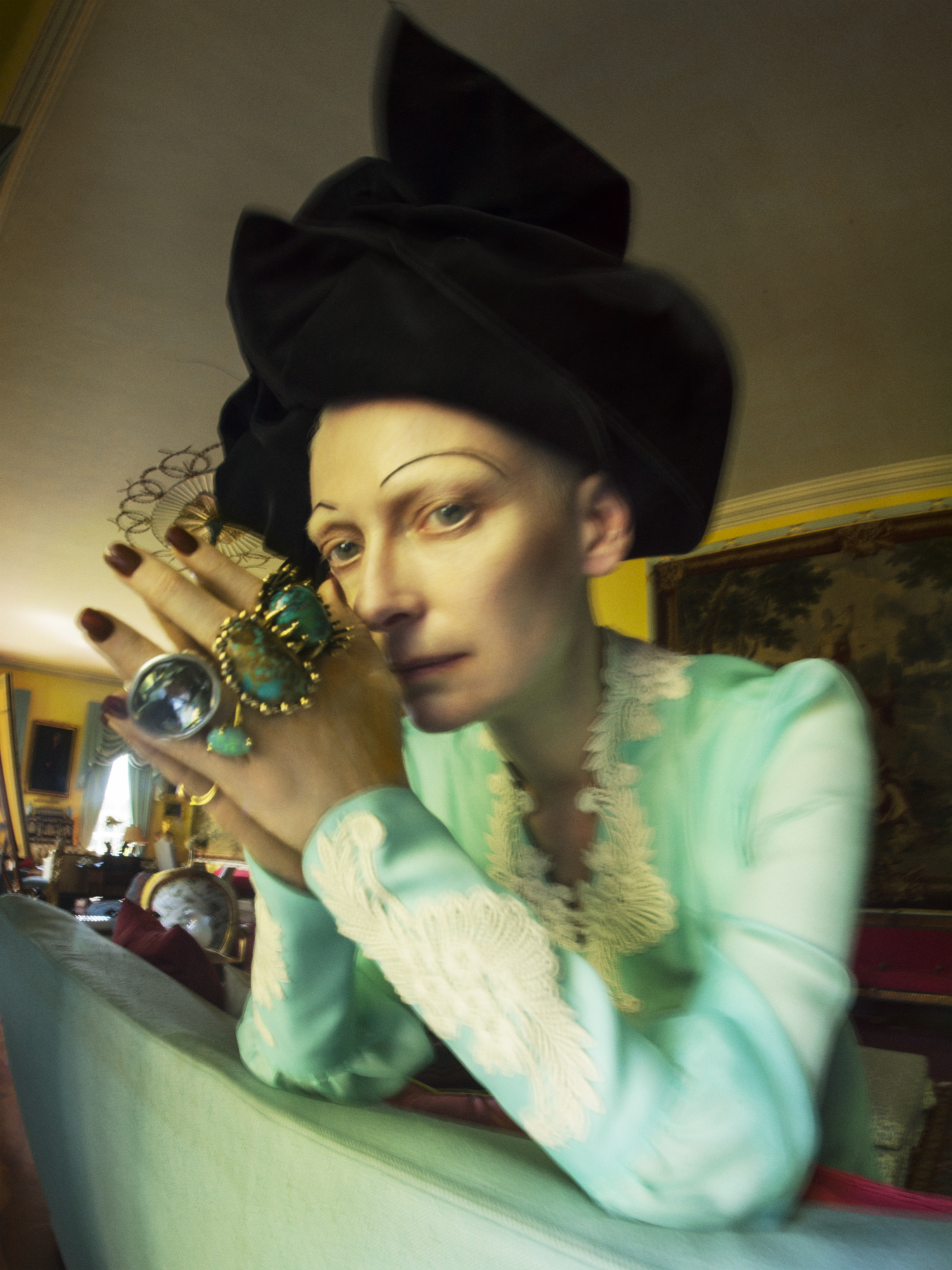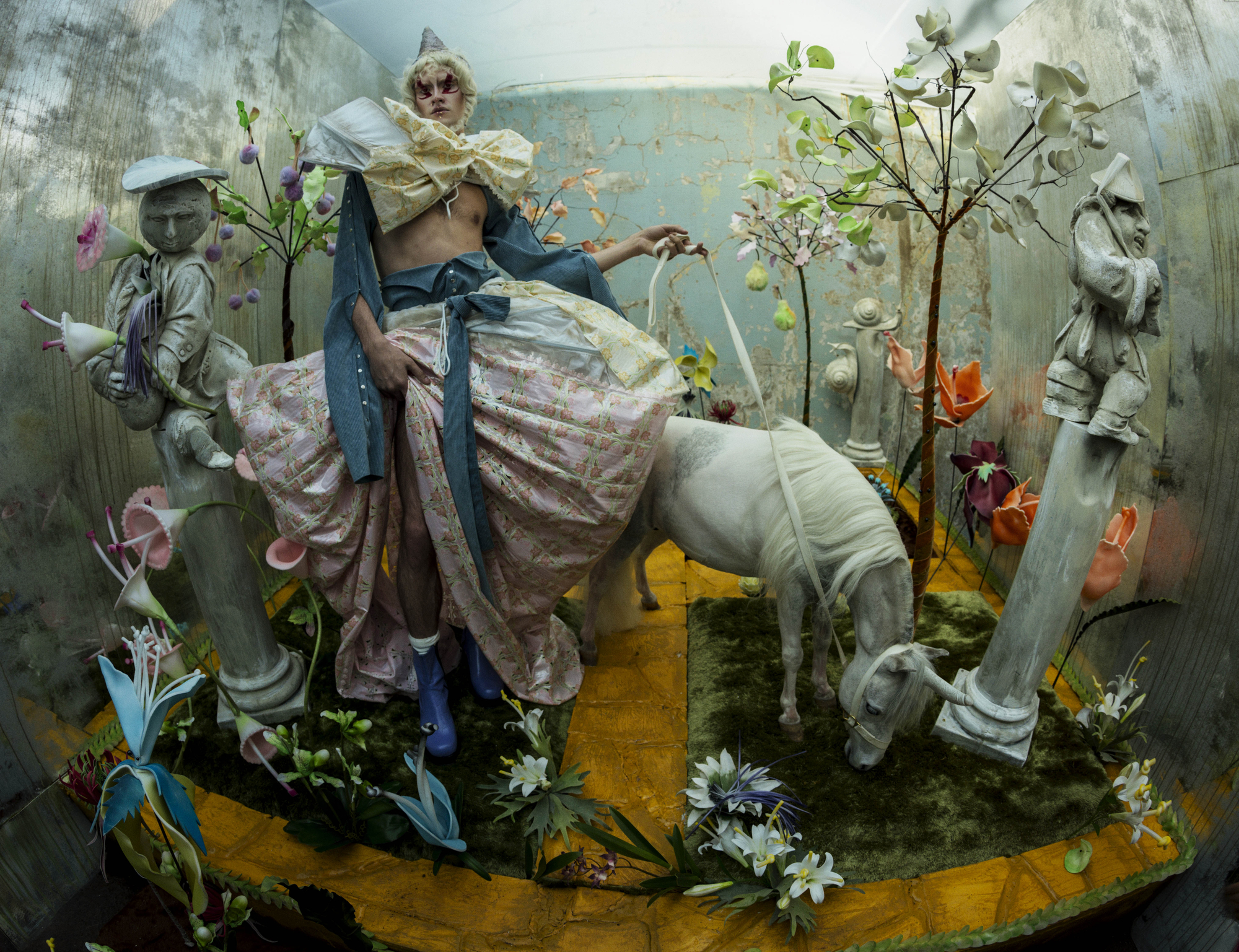The Oriental Fairytale of Tim Walker’s Wonderful Things
Tim Walker’s latest exhibition, inspired by artifacts from the Getty and the Victoria & Albert Museum, takes as its origin myth the violation of a grave. “As I wandered around the V&A,” the British fashion photographer writes, “I imagined how it must have felt for the archaeologist Howard Carter when he first encountered the sublime contents of the tomb of Tutankhamun in 1922.” One hundred years later, Walker quotes his colonial predecessor without a glimmer of shame: “As my eyes grew accustomed to the light…details of the room within, emerged slowly from the mist, strange animals, statues, and gold—everywhere the glint of gold… I was struck dumb with amazement, and when Lord Carnarvon, unable to stand the suspense any longer, inquired anxiously, ‘Can you see anything?’ it was all I could do to get out the words ‘Yes, wonderful things.’”
Text Written by Chelsea Shi-Chao Liu
Like Carter and the philosopher in Plato’s Cave, Walker has found himself a radiantly fantastical reality. And it is a wonderful “discovery” indeed – this treasure trove that has never glowed so colorfully as under the white gaze. Wonderful Things reinterprets artifacts from the Mughal Empire to Renaissance Germany through ten truly gorgeous photo-shoots. There is no disputing the mastery of Walker’s craft, and that of the talented models, stylists, makeup artists, and set designers who he works with to create his “worlds.” Walker’s vision is exotic, escapist, and thoroughly enchanting. It’s almost easy to forget that his hero was no hapless Alice in Wonderland, but a colonizer robbing the sacred resting grounds of a child king. In a time when museums are under pressure to interrogate their complicity in the violence of imperialism, Walker is startlingly uncritical in celebrating the institution.
In the “Lil’ Dragon” series, he takes inspiration from a lacquered snuffbox of uncertain Chinese or Japanese origin. “As soon as I saw the tiny box with two dragons on it,” he recollects, “I visualized an empress walking her pet dragon at night and picking a flower that only blooms during the full moon.” In hyper-stylized photographs shot under UV light, Asian models are modern-day Dragon Ladies, alien dolls swallowed up in Roksanda gowns and masks by James Merry. The Orientalism is so over-the-top to almost read as satirical — only Walker’s analysis betrays not the least self-awareness or subversive intent in using these stereotypes.

With “Cloud 9,” Walker turns his gaze to India’s “vibrancy and mysticism.” Shot in England during a heat wave, the photographs capture South Asian models swathed in floral Richard Quinn and swooning in fields of flowers, towered over by pastel elephants and twee tigers on stilts. Walker describes dreamily how “the Worcestershire delphinium fields were illuminated in an intense light reminiscent of India.” The series is paired on display with a watercolor illustration of Shiva and Andhaka from 1590 in modern-day Lahore, India. It depicts, ironically enough, the demon Andhaka being banished from a garden for stealing a flower.


Yusuf Siddiqi, Ravyanshi Mehta, Kiran, – Kandola, Jeenu Mahadevan, Part 1. Fashion: Emma Cook, Roksanda. In Pershore, Worcestershire. Chromogenic print © Tim Walker Studio EX.2023.5.41
This propensity for Orientalizing is particularly unfortunate given Walker’s sensitive eye for gender fluidity and nonconformity. In “The Land of the Living Men,” Walker explores “the spectrum of masculinity in all its glorious manifestations” through tender, sybaritic portraits of nude men. Nestled in the earth of the English countryside, the naked flesh amongst apples and rabbits gives a real sense of place and humanity. In “Out of the Woods,” trans artist Salvia plays a regal queer ancestor in tableaux styled after the paintings of Lucas Cranach the Elder and Dieric Bouts. These photographs are an exquisite embodiment of queer history as reimagined by its heirs. Evidently, Walker’s escapism is not apolitical but speaks to freedom of expression and freedom from oppression. “Box of Delights” features James Spencer escaping from his family home dressed as a glamorous woman, while Tilda Swinton appears as the flamboyant poet Dame Edith Sitwell in “Why Not Be Oneself.” Yet surely there is a wrinkle in the logic here: the paradox of questioning gender conventions while perpetuating colonialism. Now Walker resembles a modern Orlando traipsing across time, appropriating the spoils of conquest to devise for herself an exotic sexuality.

For Walker, the museum is still a Wunderkammer, or room of wonder. A precursor to the modern museum, these collections of rare and exotic items emerged in the late sixteenth century during the so-called Age of Exploration. They ran the gamut from anthropological to zoological specimens, grouped haphazardly with little regard for provenance. Artifacts, often plundered from foreign lands, were displayed as fantastic trophies. These rooms were the place of pride of Western imperialism and its desires to know, gawk at, and possess the Other.
Embracing the museum as a site of unqualified wonder, Walker revels in a vision of fantasy that glosses over historical context and questions of provenance. His photographs are conjured out of first impressions and fancies that center his personal lens of interpretation. They show little interest in a real relationship to history. How did these artifacts come to be held at the museum? What rich, specific cultures and stories do they attest to? What can we do to relate to them with care and criticality? These are questions which should be at heart of the Getty and of the V&A’s mission today. And though they may vex and frustrate easy pleasure in aesthetics, these questions too, are beautiful.
In looking at objects – and people – through an aura of mysticism, Wonderful Things is playing with wonderful shadows, but only shadows after all.
Tim Walker: Wonderful Things runs from May 2—August 20, 2023 at the Getty Center (1200 Getty Center Dr, Los Angeles, CA 90049).
The J. Paul Getty Museum, “Tim Walker: Wonderful Things,” The J. Paul Getty Museum, 2023, https://www.getty.edu/art/exhibitions/walker/explore.html.
Jaime Hovey, “`Kissing a Negress in the Dark’: Englishness As a Masquerade in Woolf’s Orlando,” PMLA: Publications of the Modern Language Association of America 112 (3), 1997.
Hannah Pethen, “Wunderkammers, colonial hangovers and multivocality,” Scribe in the House of Life, August 24, 2022, https://hannahpethen.com/2022/08/24/the-modern-wunderkammer-colonial-hangover-or-locus-of-multivocality

